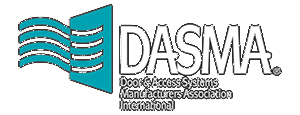Automated Gate Industry Gets Code Changes: 10 Years of Work Pays Off
© 2008 Door & Access Systems
Publish Date: Winter 2008
Author: Tom Wadsworth
Page 42
Automated Gate Industry Gets Code Changes
10 Years of Work Pays Off
By Joe Hetzel, DASMA Technical Director
In September, the International Code Council approved three code-change proposals affecting the automated vehicular gate industry. DASMA submitted two of the code-change proposals, representing the interests of an automated vehicular gate coalition of DASMA, IDA (International Door Association), AFA (American Fence Association), and NOMMA (National Ornamental & Miscellaneous Metals Association).
With the new changes, the 2009 International Fire Code (IFC) and the 2009 International Building Code (IBC) will require automated vehicular gate installations within their respective code scopes to comply with the provisions of UL 325 and ASTM F2200. The code changes should be published in May 2009 and are expected to begin to be enforced shortly thereafter.
About UL 325 and ASTM F2200
UL 325 governs gate operators and some other types of operators. The standard includes requirements for entrapment protection and other safety-related requirements.
ASTM F2200 applies to the construction of the vehicular gate itself and encompasses many types of gates. The standard is harmonized with UL 325 regarding entrapment protection. It addresses topics such as gaps, protrusions, pinch points, and openings.
The IFC covers gates installed across roads that provide “fire apparatus access from a fire station to a facility, building, or portion thereof.” Such roads include “all terms such as fire lane, public street, private street, parking lot lane, and access roadway.” The IBC covers gates installed in a building, facility, or portion thereof.
Keith Bomholt, owner of Cheney Door in Wichita, Kan., and an IDA member of the coalition, commented about the impact of these code changes.
Keith, what will this mean for the marketplace in your area?
When the 2009 IFC and the 2009 IBC are adopted locally, there will be consistent requirements across Sedgwick County and the city of Wichita. Thus there will be consistency in the marketplace in bidding jobs such as gates across public roads and gates for buildings and facilities.
What does this mean for the way you do business?
It gives me more confidence in selling any vehicular gate type for those applications, knowing that safety provisions are in place in the codes.
Can you think of any other specific examples of how the changes improve the marketplace?
When fire department authorities are contacted for an automated gate installation, they can now refer to code-specific requirements.
The effort to change the codes has been more than 10 years in the making, beginning with the initiation of development of the ASTM F2200 standard in 1998. Substantial changes to UL 325 were implemented in 2000, and ASTM F2200 was published in 2002. The code-change proposals were finally approved in 2008 after several attempts that were first initiated by the Consumer Product Safety Commission.
The coalition is developing code-change proposals for the International Residential Code and the International Property Maintenance Code, in hopes of completing the set of code requirements by the 2012 editions. The next code-change cycle begins in March 2009.
